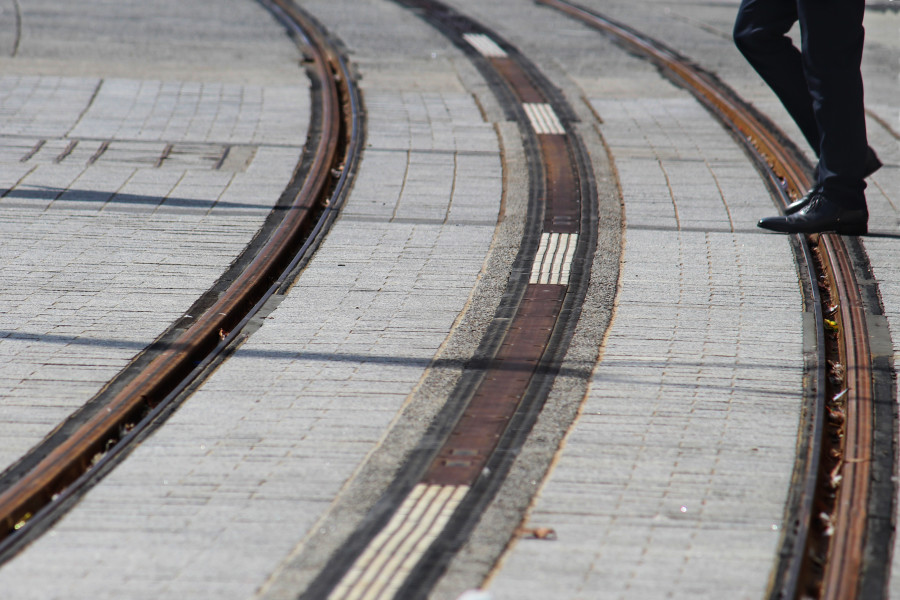Transport for NSW v Hunt Leather Pty Ltd; Hunt Leather Pty Ltd v Transport for NSW [2024] NSWCA 227
The NSW Court of Appeal has allowed an appeal by Transport for NSW (TfNSW), setting aside a NSW Supreme Court decision which initially found TfNSW liable to business owners along the Sydney Light Rail (SLR) alignment in nuisance said to have arisen from construction of the SLR. The Court of Appeal also dismissed a cross-appeal by the Plaintiffs regarding litigation funding costs.
Background
On 19 July 2023, in Hunt Leather Pty Ltd v Transport for NSW,1 the Supreme Court found TfNSW liable in private nuisance to the lead plaintiffs of representative class action proceedings commenced against TfNSW by businesses and members of the public said to have been affected by construction of the SLR.
On 22 February 2024, the Supreme Court of NSW also determined that a litigation funding commission charged by a litigation funder to lead plaintiffs and group members in the proceedings was not recoverable as damages against TfNSW.
The NSW Court of Appeal (Bell CJ, Leeming JA and Mitchelmore JA) recently handed down its decision overturning the Supreme Court of NSW's finding of nuisance and dismissing a cross-appeal brought by the Plaintiffs regarding litigation funding costs.2
Appeal
In the first instance, the Supreme Court found TfNSW liable to business owners along the SLR alignment in nuisance said to have arisen from construction of the SLR. In particular, the Supreme Court found that construction delays, which exceeded time for completion of an amended Initial Delivery Program (Amended IDP), amounted to a substantial and unreasonable interference with the Plaintiffs' enjoyment of their property. On this basis, the Supreme Court awarded two of the four lead plaintiffs damages in private nuisance for the period of time in which construction exceeded the time permitted in the Amended IDP. Claims in public nuisance made by two other plaintiffs were dismissed.
TfNSW appealed the decision on several grounds, including that there was insufficient evidence to support a finding of nuisance due to a substantial and unreasonable interference with the Plaintiffs' land.
The central aspect of TfNSW's appeal was whether the evidence led at trial, including an Initial Delivery Program contained in the Project Deed (IDP) and the Amended IDP could be regarded as reasonable estimates for the timeframe for the completion of various stages of the construction of the SLR.
TfNSW submitted that a comparison between the IDP and the Amended IDP could not form the basis of a finding of unreasonable interference with the use and enjoyment of the Plaintiffs' land. Specifically, TfNSW argued the Amended IDP assumed a timeframe for completion of construction was achievable despite providing no consideration as to whether it was reasonably achievable, or how it was to occur. In particular, the Amended IDP did not grapple with the discovery of utilities along the alignment during construction.
This was relevant in circumstances where it was the Plaintiffs' case that TfNSW ought to have done more to identify "unknown utilities" prior to the commencement of construction.
The Court of Appeal unanimously allowed TfNSW's appeal and awarded TfNSW costs of both the Appeal and the first instance proceedings.
In reaching their decision, the NSW Court of Appeal held the Plaintiffs had "failed to prove a critical integer" of their case, and found that:
-
the IDP made insufficient allowances for various contingencies including inclement weather, the discovery of unknown utilities and their treatment;
-
although the Amended IDP increased the time each fee zone would be occupied by construction to address alleged deficiencies in the IDP, it proceeded on the basis that no construction would commence until there was complete knowledge of the thousands of sub-surface utilities along the SLR route; and
-
it was not established whether it was possible to obtain complete knowledge of the unknown utilities, how long that would take, or whether it would also result in a substantial interference with the enjoyment of the Plaintiffs’ land.3
The Court of Appeal held that:
"It cannot be the law that construction authorised by statute becomes actionable nuisance if it takes a month or two months or three months longer than scheduled. But the plaintiffs did not demonstrate when the time taken for construction became actionable nuisance in light of the number of sub-surface utilities that needed to be treated for the purposes of construction. Whether the time in fact taken in light of that universe of practical issues and challenges was unreasonable was not the subject of evidence or analysis."4
The Court of Appeal also noted the absence of any evidence adduced by the Plaintiffs providing a rational explanation for how TfNSW could have obtained complete knowledge of the utilities in advance of construction without causing further substantial interference with the Plaintiffs' enjoyment of their property.5
The remainder of the grounds of appeal were dismissed by the NSW Court of Appeal, including that nuisance required the consideration of reasonable care when undertaking construction activities, that the construction of the SLR project was an exercise of a special statutory power within the meaning of s 43A of the Civil Liability Act 2002 (NSW) or that the SLR project constituted a common and ordinary use of land.
Cross-appeal
By Cross-Appeal, the Plaintiffs sought to overturn the decision of Cavanagh J in the first instance which found a litigation funding commission charged by a litigation funder to lead Plaintiffs and Group Members in the proceedings was not recoverable as damages against TfNSW.
In circumstances where the Appeal was upheld, the Court of Appeal dismissed the Cross-Appeal as the issue did not arise, however, it did address the Cross-Appeal as it was a "question of principle, and one which will recur in other cases".
As previously noted, the Plaintiffs entered into a litigation funding agreement, which in part, provided that in the event of a resolution of the proceeding after 31 December 2019, the funder’s commission would be 40%.
The Court of Appeal unanimously held that entry into funding agreements was a voluntary act by some group members who had "chosen to bargain away the risk of being exposed to an adverse costs order and a liability to pay security for costs".6
The real benefit of the litigation funding agreement was found by the NSW Court of Appeal to be "an indemnity for the certainty of the incurring of legal costs, and the practical certainty of a liability to provide security for costs, and the potential liability for an adverse costs orders".7
Further, the Court of Appeal stated:
"It is to be borne steadily in mind that litigation funders are not altruistic organisations dedicated to enhancing access to justice; they are self-interested investors, seeking to profit by involving themselves in litigation. The fact that litigation may be funded of itself provides no good reason to alter the rules of compensable loss for tort."8
The Court of Appeal conclude the Litigation Funder's fee of 40% was not to be regarded as a foreseeable loss caused by any nuisance, but instead as a voluntary act of the plaintiff.
The cross-appeal was dismissed with costs awarded to TfNSW.
1 [2023] NSWSC 840.
2 Transport for NSW v Hunt Leather Pty Ltd; Hunt Leather Pty Ltd v Transport for NSW [2024] NSWCA 227.
3 At [85]-[87].
4 At [96].
5 At [94].
6 At [196].
7 At [197].
8 At [200].
All information on this site is of a general nature only and is not intended to be relied upon as, nor to be a substitute for, specific legal professional advice. No responsibility for the loss occasioned to any person acting on or refraining from action as a result of any material published can be accepted. Lander & Rogers is furthermore committed to providing legal advice and content that is factual, true, practical and understandable. Learn more about our editorial policy.
 Client portal
Client portal












